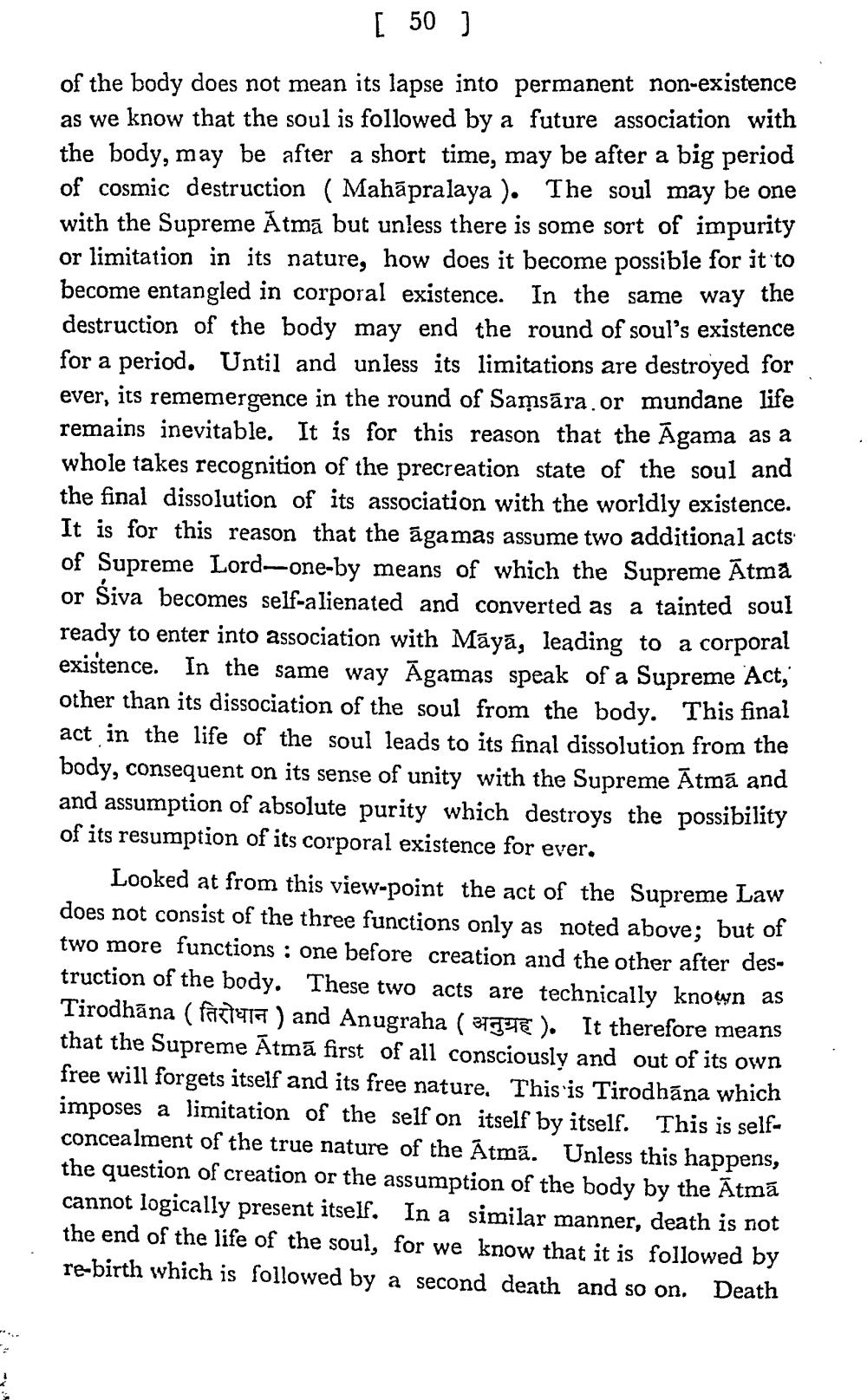________________
[ 50 ] of the body does not mean its lapse into permanent non-existence as we know that the soul is followed by a future association with the body, may be after a short time, may be after a big period of cosmic destruction ( Mahāpralaya ). The soul may be one with the Supreme Atmā but unless there is some sort of impurity or limitation in its nature, how does it become possible for it to become entangled in corporal existence. In the same way the destruction of the body may end the round of soul's existence for a period. Until and unless its limitations are destroyed for ever, its rememergence in the round of Samsāra.or mundane life remains inevitable. It is for this reason that the Āgama as a whole takes recognition of the precreation state of the soul and the final dissolution of its association with the worldly existence. It is for this reason that the āgamas assume two additional acts of Supreme Lordmone-by means of which the Supreme Atma or Siva becomes self-alienated and converted as a tainted soul ready to enter into association with Māyā, leading to a corporal existence. In the same way Āgamas speak of a Supreme Act, other than its dissociation of the soul from the body. This final act in the life of the soul leads to its final dissolution from the body, consequent on its sense of unity with the Supreme Atma and and assumption of absolute purity which destroys the possibility of its resumption of its corporal existence for ever.
Looked at from this view-point the act of the Supreme Law does not consist of the three functions only as noted above; but of two more functions : one before creation and the other after destruction of the body. These two acts are technically known as Tirodhāna (तिरोधान ) and Anugraha ( अनुग्रह ). It therefore means that the Supreme Atmā first of all consciously and out of its own free will forgets itself and its free nature. This is Tirodhāna which imposes a limitation of the self on itself by itself. This is selfconcealment of the true nature of the Atmā. Unless this happens, the question of creation or the assumption of the body by the Atmā cannot logically present itself. In a similar manner, death is not the end of the life of the soul, for we know that it is followed by re-birth which is followed by a second death and so on. Death




